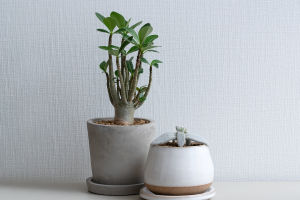When plants are dormant or semi-dormant, slowing down or stopping watering is an important part of plant care.
The dormant period of plants is a natural adaptation mechanism for coping with environmental changes, especially temperature and light variations.
During this stage, the plant's metabolism slows significantly, growth almost stops, and they enter a state similar to "resting." Understanding this dormant period and adjusting the frequency of watering is crucial to ensure plants grow vigorously in the next season.
The occurrence of dormancy is closely related to changes in the physiological needs of plants. In cold winters or dry seasons, many plants spontaneously enter dormancy to protect themselves from environmental stress.
At this time, the activity of the roots decreases, the ability to absorb water diminishes, and the growth of leaves or branches slows down significantly. Continuing to water as if they were still growing will not promote growth but may cause water issues, such as root rot.
For succulents and cacti, controlling watering is especially important. These plants can store a large amount of water in their leaves and stems, enough to support them through long dry periods.
During dormancy or semi-dormancy, frequent watering disrupts their water metabolism. During this period, it's essential to reduce the watering frequency or even stop watering entirely, to avoid stressing the roots with excessive water.
Deciduous plants also manifest dormancy by shedding their leaves, which helps reduce water evaporation and conserve energy.
Since they no longer need much water to support transpiration, the demand for watering decreases significantly.
In cold climates, where soil moisture evaporates more slowly, continued watering may cause water accumulation. This can lead to roots being in overly moist conditions, eventually resulting in frost damage or rot. Thus, reducing watering or keeping the soil dry helps plants survive the dormant period.
Evergreen plants also need to regulate water intake during dormancy or semi-dormancy. Although they do not shed leaves like deciduous plants, their growth still slows down.
Excessive watering can prevent them from exchanging oxygen normally, especially in winter when low temperatures slow water evaporation from the soil.
This can lead to water accumulating around the roots, causing suffocation. Even evergreen plants need adjusted watering based on seasonal changes and growth conditions to avoid root damage.
For indoor plants, seasonal dormancy and water management are equally important. Most indoor plants enter dormancy in autumn and winter when light decreases, and temperatures drop.
At this time, the watering frequency should be adjusted to avoid overwatering due to the stable indoor environment. Many plants nearly stop growing during dormancy, and their roots absorb less water.
If you continue to water heavily, the soil remains moist for too long, increasing the risk of fungal infections or root rot. In autumn and winter, you can assess the need for watering by checking the soil surface and watering only when it is dry.
Dormancy is not only a response to environmental stress but also a stage where plants store energy for the next growth phase. Reducing water supply during dormancy prevents excessive water stress. This period allows plants to repair their roots, adjust their physiological state, and prepare for rapid growth in spring.
As dormancy ends and temperatures rise, plant metabolism gradually returns to normal. The amount of watering can then be increased to match the plant’s growth needs. However, this increase should be gradual.
Sudden large-scale watering can shock the plant’s roots, which may lead to adverse effects. The resumption of watering should be controlled to avoid disrupting the plant's adaptation to changing water levels.
The dormant or semi-dormant period is marked by significant physiological changes in plants. During this time, plants no longer require substantial water, so reducing or stopping watering is necessary.
By adjusting watering frequency properly, you can help plants stay healthy during dormancy, avoid diseases caused by waterlogged roots, and prepare them for a season of robust growth.
Effective water management during dormancy not only prolongs plant life but also improves their resistance to diseases, making them stronger and more adaptable to changing environments.


